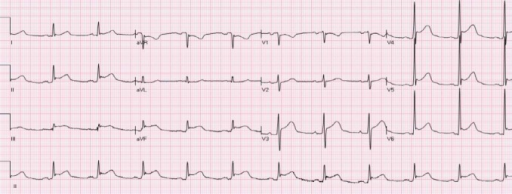Playlist
Show Playlist
Hide Playlist
Constrictive Pericarditis: Signs and Symptoms
-
Slides Pericardial Disease Constrictive Pericarditis Cardiovascular Pathology.pdf
-
Download Lecture Overview
00:01 Now, the concept once again, pretty much the continuation of restrictive. When we talk about pericardial effusion. 00:08 The hardest on the once expense, so therefore you expect there to be decrease cardiac output. 00:11 You expect there to be increase accumulation of fluid within the pulmonary veins. 00:14 So therefore, there will be pulmonary edema. I’m walking through this quickly because we have done this so many different times. 00:20 Dyspnea, fatigue, hepatomegaly. Why? Why? The heart is not filling. Back-up. From where? Not the left side. Right? You back-up from the right side. 00:33 You back-up from the right side. Into where? Inferior vena cava. 00:37 Where you going? Liver. What’s gonna happen? Hepatomegaly. Right? Ascites. How was that occurring? Oh maybe there was half a liver damage taking place? And so there many ways in which you would be developing increase accumulation of fluid. 00:51 You have already heart that has decrease cardiac output. And have the liver is not functioning, well. 00:56 Well,maybe end up having poor hypertension. Decrease oncotic pressure. 00:59 Are you with me? So lot of physiology here. Then we have to bring in. 01:02 Remember all of medicine, all of medicine is normal. Pathology is well. Physiology gone array. 01:09 And then, how do you manage your patient? Alright? So you get that down. My goodness. 01:14 You’ve got 90-95 % of medicine down. And then, all you have to do is filling the details. That entrust me. 01:20 That is a eternal journey. Okay? Please don’t feel overwhelmed. You’re here because you need help. 01:26 You’re here so that you can get support. That’s all we’re trying to do. 01:30 Let’s continue. You got this. Feel good about what you’re doing. 01:34 Peripheral edema, sure. Why? Constrictive pericarditis, right side. 01:38 Physical examination, reveal a characteristic pericardial knock. Kussmaul’s sign, is going to be your positive JVD. 01:48 More so with constrictive pericarditis. Not usually seen of cardiac tamponade. 01:53 Because remember cardiac tamponade, whoom. Fluid accumulating pericardial cavity, very, very rapid. 02:01 And so therefore, you’re looking at issues in which hypertension takes place very quickly. 02:05 Hemodynamically unstable that patient. Cardiac Tamponade. 02:09 Give yourself an example such as ventricular wall rupture.
About the Lecture
The lecture Constrictive Pericarditis: Signs and Symptoms by Carlo Raj, MD is from the course Pericardial Disease: Basic Principles with Carlo Raj.
Included Quiz Questions
Which of the following features is NOT seen in patients with constrictive pericarditis?
- Dyspnea at rest
- Exertional dyspnea
- Fatigue
- Liver enlargement
- Ascites
Which of the following is commonly heard with constrictive pericarditis?
- Pericardial knock
- Pericardial rub
- Opening snap
- S3
- Holosystolic murmur
Customer reviews
5,0 of 5 stars
| 5 Stars |
|
5 |
| 4 Stars |
|
0 |
| 3 Stars |
|
0 |
| 2 Stars |
|
0 |
| 1 Star |
|
0 |




